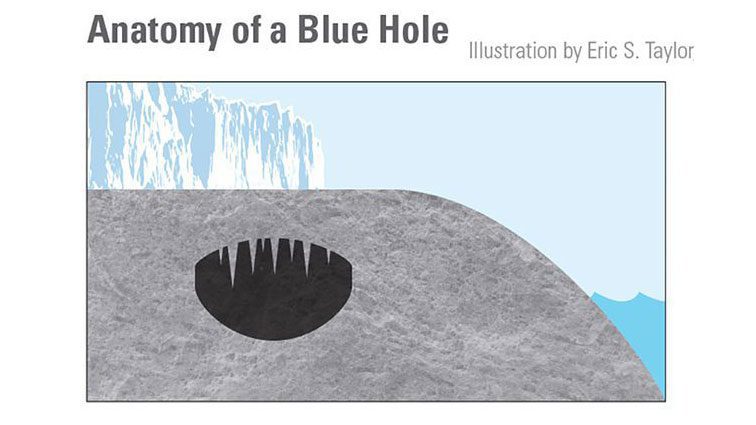A blue hole in the ocean is a striking sight. Fly over remote areas of the Caribbean Sea and you’ll see shallow turquoise water stretching for miles, interrupted only by occasional sand bars and coral reefs. In a few rare spots, though, the ocean floor suddenly falls away hundreds of feet into a round, gaping, steep-walled maw big enough to swallow a small ship. The dark blue color of the deeper waters in these submerged caverns contrasts dramatically with the sapphire hues of shallower waters nearby.
These sinkholes, framed by limestone, formed on dry land during the last ice age, when much of the Earth’s water was frozen in massive ice sheets on land and sea levels were almost 400 feet lower than today. Limestone is easily erodible, and groundwater trickling through it carved away huge underground caverns. Their roofs eventually caved in, leaving deep shafts open in the Earth. When the ice age ended and sea levels rose again, these holes flooded, creating deep vertical caverns in what is now the seafloor. (Illustration by Eric S. Taylor, © Woods Hole Oceanographic Institution) https://www.whoi.edu/oceanus/feature/blue-holes-and-hurricanes/
Image and Visual Licensing
WHOI copyright digital assets (stills and video) contained on this website can be licensed for non-commercial use upon request and approval. Please contact WHOI Digital Assets at images@whoi.edu or (508) 289-2647.









